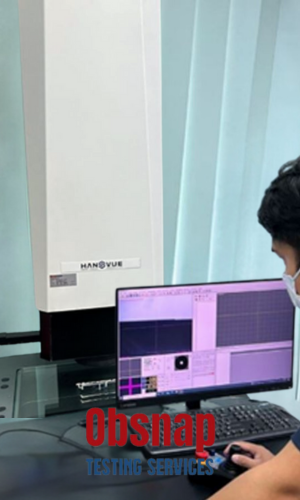Sample measurement to large scale metrology

What is Sample Measurement to Large Scale Metrology?
Sample measurement to large scale testing involves the evaluation of objects or structures across a wide range of sizes, from small-scale samples to large-scale components or systems. This testing assesses dimensional accuracy, geometric features, and structural integrity to ensure compliance with design specifications and standards. Common methods include 3D scanning and reverse engineering, which enable accurate measurement and analysis of complex shapes and structures.
Why is this Sample Measurement to Large Scale Metrology important?
Sample measurement to large scale testing is crucial for several reasons:
- Quality Assurance: Ensures that products and structures meet dimensional and geometric requirements for proper function and performance.
- Design Verification: Validates the accuracy of design models and prototypes by comparing them to real-world measurements.
- Fault Detection: Identifies deviations from design specifications and potential defects in manufactured components or structures.
- Optimization: Provides data for process optimization and improvement, leading to higher efficiency and cost savings.
- Documentation: Facilitates documentation of as-built conditions for maintenance, repair, and retrofitting purposes.
The principle behind sample measurement to large scale testing involves capturing and analyzing the geometry and dimensions of objects or structures using advanced measurement techniques. Key concepts include:
- 3D Scanning: Utilizes laser or structured light technology to capture the surface geometry of objects in three dimensions. The scanner emits light onto the object’s surface, and sensors measure the reflected light to create a digital representation of the object’s shape.
- Reverse Engineering: Involves the process of digitally reconstructing the design intent of a physical object by analyzing its geometric features and dimensions. This can be done using 3D scanning data to create a CAD model or engineering drawings.
These standards provide guidelines for tolerances, measurement methods, and documentation requirements to ensure accurate and consistent results in sample measurement to large scale testing.
Various tools and instruments are used in sample measurement to large scale testing, with 3D scanners being the primary tool. These scanners come in different types, including:
- Laser Scanners: Emit laser beams to capture precise surface geometry, suitable for objects with complex shapes and fine details.
- Structured Light Scanners: Project patterns of light onto the object’s surface and use cameras to capture the deformation of the patterns, providing accurate 3D measurements.
- Coordinate Measuring Machines (CMMs): Used for precise dimensional measurements of individual components, including large-scale components in industrial settings.
Performing sample measurement to large scale testing involves several steps:
- Preparation: Set up the object or structure to be scanned in a controlled environment with adequate lighting and minimal interference.
- Scanning: Use the 3D scanner to capture the object’s surface geometry by scanning it from multiple viewpoints. Ensure sufficient coverage to capture all relevant features.
- Data Processing: Process the scanned data using specialized software to align individual scans, remove noise, and create a unified 3D model.
- Analysis: Analyze the 3D model to extract dimensional measurements, geometric features, and other relevant data.
- Reverse Engineering (if applicable): Use the scanned data to reverse engineer the object by creating CAD models or engineering drawings that accurately represent its geometry and dimensions.
Sample measurement to large scale testing may adhere to various international standards depending on the industry and application. Some key standards include:
- ISO 1101: Geometrical Product Specifications (GPS)—Geometrical Tolerancing—Tolerances of Form, Orientation, Location, and Run-Out.
- ISO 5459: Geometrical Product Specifications (GPS)—Geometric Tolerance—Datums and Datum-Systems for Geometrical Tolerance.
- ASME Y14.5: Dimensioning and Tolerancing Standards.
no testing available.
